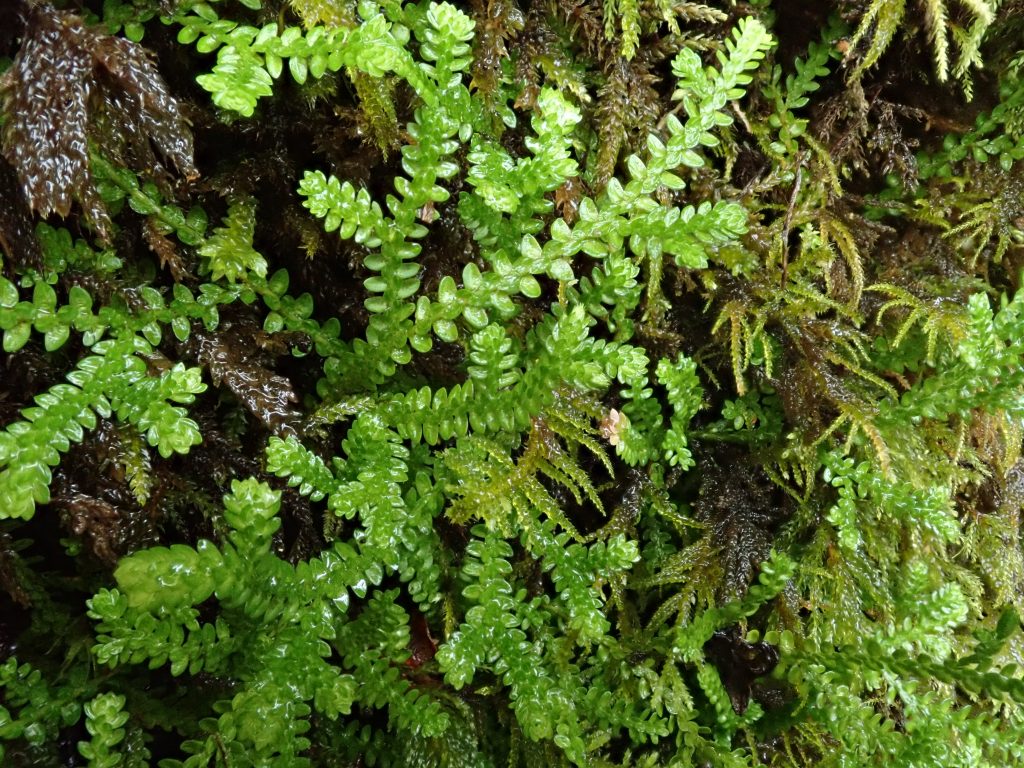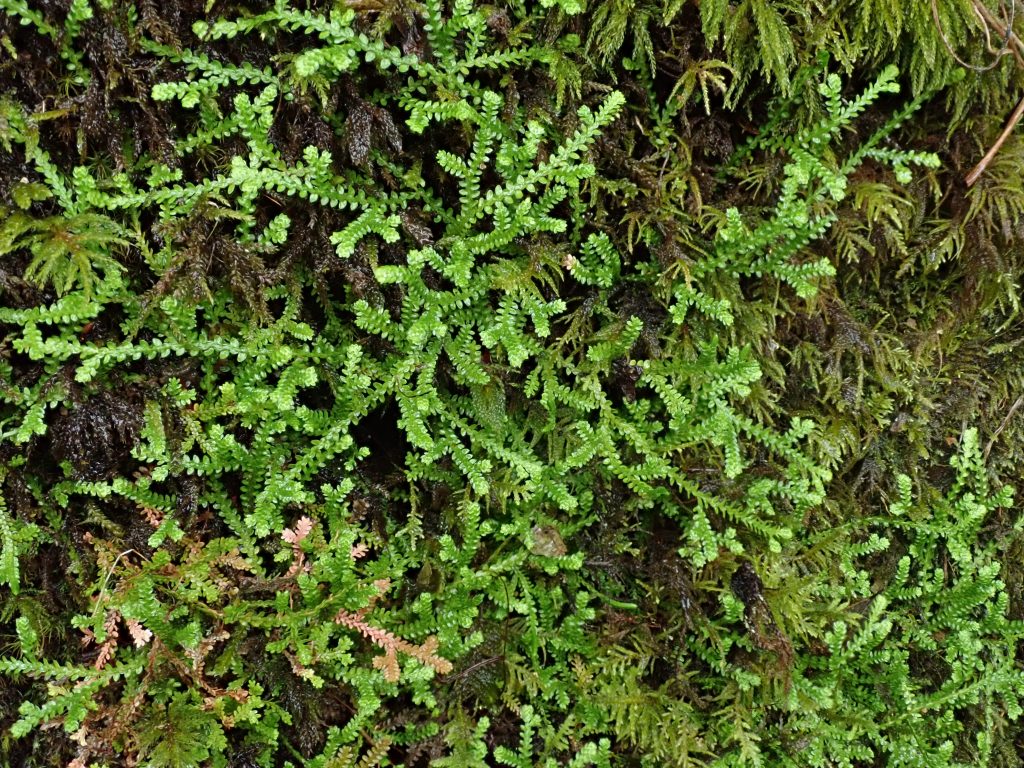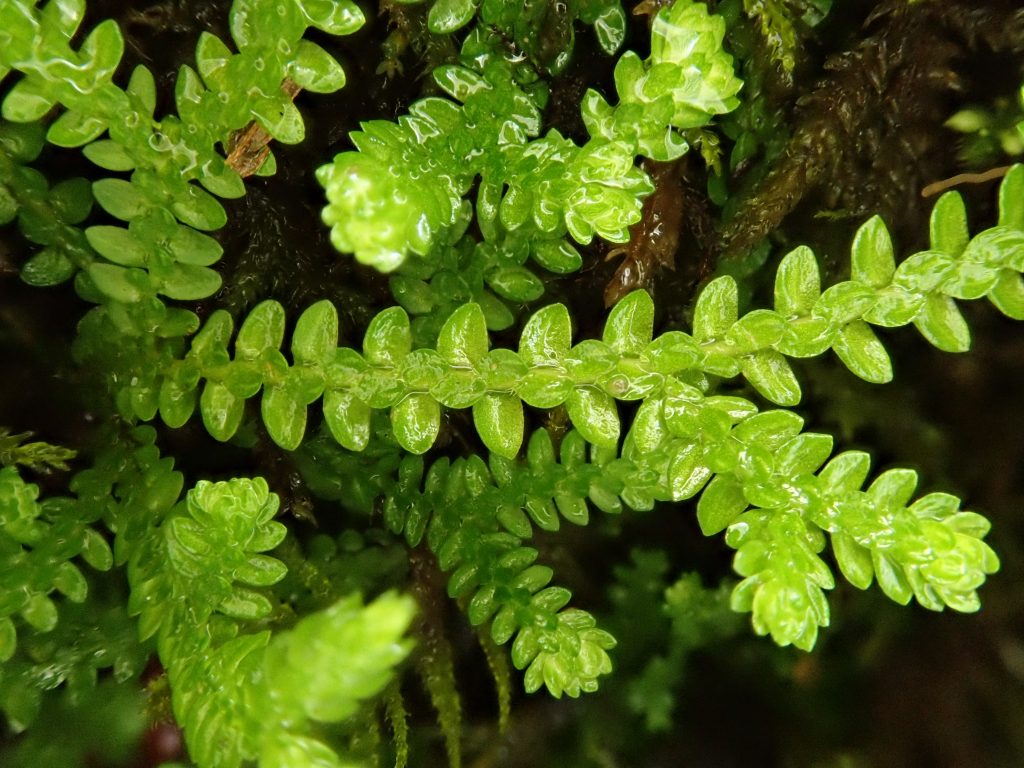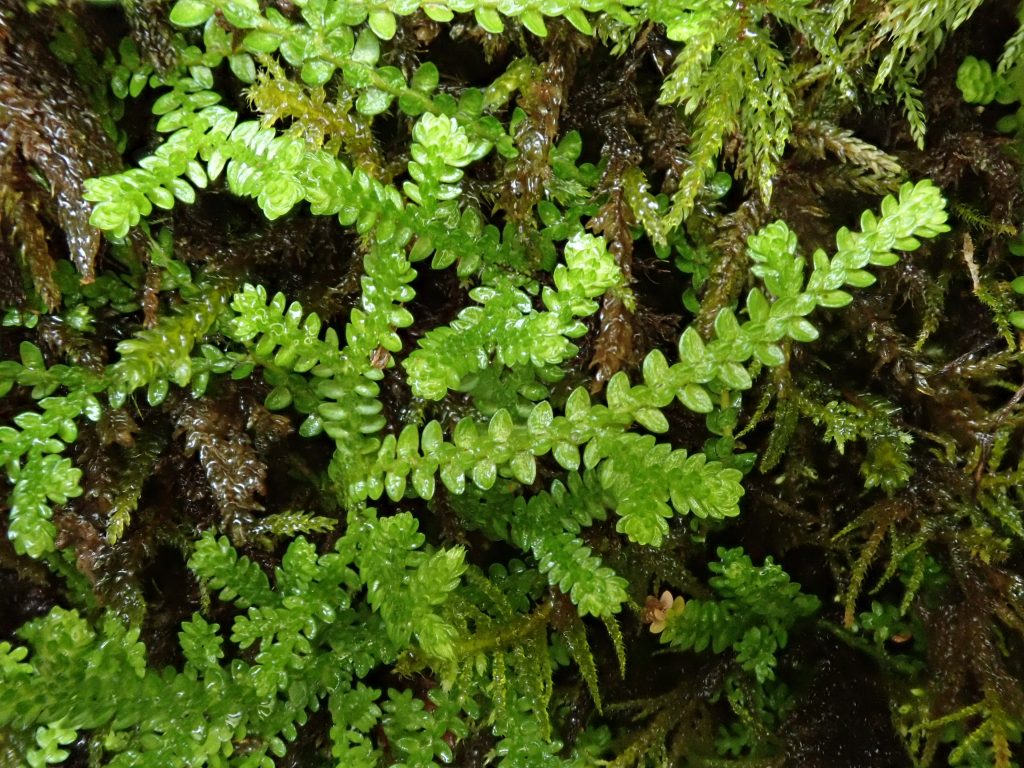
So, this is very embarrassing. I did not know what this was when I found it. But that’s not the embarrassing part. I often don’t know what things are when first I find them. I just assumed it was a liverwort, took some photos and grabbed a specimen, and carried on with my stroll. When I got home, completely ignoring how stiff the stem was, I proceeded to force it, like a square peg in a round hole, through the liverworts key, coming to the conclusion that it was Diplophylum taxifolium. That isn’t just the wrong species, or even the wrong family, but the wrong dang division (phylum)! That is the very embarrassing part! I am eternally grateful to Dr. David Wagner for seeming more amused than disgusted when he graciously corrected my gross misidentification.

Spikemosses (Selaginella) are vascular plants (which is why it has a stiff stem; that’s due to the xylem, the lignified tissue that transports water and minerals from the soil into the plant tissues). They are the sole genus in the family Selaginellaceae, one of the members of the class Lycopodiopsida. Lycophytes reproduce by spores rather than seeds, which used to put them in the same clade (Pteridophytes) as ferns and horsetails. But it has since been ascertained that lycophytes and ferns do not share a common ancestry, with ferns (coeval with seed bearing plants) arising later and from a different branch of the bryophtic tree.
Selaginella spp. are different from most sporophytic species in that they are heterosporous, meaning they don’t produce asexual spores (homospory), but instead produce female and male spores on different parts of the strobilus (spore producing structure), which are vastly different sizes. The female spores are called megaspores, and are much larger because they must carry stored food due to the fact that germination happens within the spore walls and cannot utilize photosynthesis as an energy source. Male spores are called microspores (micro because they don’t need to carry food since they merely produce and release sperm) and are dispersed from the original plant. This separation of gametophytes cuts down on, but doesn’t eliminate, self fertilization, because each one germinates in relative isolation from the other. When there is sufficient moisture the sperm are released from the male gametophyte, and the egg is exposed by the female gametophyte. If and when fertilization occurs the resulting zygote develops a suspenser which both transports nutrients to the zygote and pushes it into the mass of the gametophyte, which now bears a strong functional resemblance to a seed (though it still lacks the multicellular seed coat), and will grow from here into the new plant.
Heterospory is a very important stage in the evolution of seed bearing plants. It is interesting to note that most prehistoric heterospores became extinct or devolved back into homospory, and that most extant heterospores evolved from homospores. It apparently took a precise set of circumstances to push the evolution of a seed coating that allowed the seed bearing plants to become so wildly successful.

Description– Perennial; shiny green; forms prostrate mats a few inches high, although individual stems may be a foot long; alternating larger ovate leaves that attach to the ventral side of the stem, with smaller alternating ovate leaves that attach dorsally; as is characteristic of Selaginella spp. they have rhizophores (rooting stems) that branch from the main stem and have no leaves;
Similar species– No other Selaginella spp. in our area have spaced, rounded leaves. Very superficially similar to some liverworts, but Selaginella douglasii, being a vascular plant,has a much stiffer stem than any liverwort.
Habitat– Rock or soil on rock in moist, partly shaded, areas; often along streams; found up to 2400’ elevation.
Range– Known from the Clearwater River in Idaho; along the Columbia River and its tributaries from the Gorge downstream. Possibly more widespread.
Reproductive timing– It seems like most lycophytes produce strobili in mid summer, but I’m encountering a real dearth of information on this subject.
Eaten by– I can’t seem to find anything that eats Selaginella douglasii. There are reports of wild sheep, goats, and caribou eating other Selaginella, but nothing about douglasii.
Etymology of names– Selaginella is a diminutive of selago, an ancient Latin word for clubmoss. The species epithet douglasii honors David Douglas, the famed Scottish botanist and naturalist, with at least 80 species named after him (including the Douglas Fir), who explored and collected widely in the PNW in the early 1800s.

http://www.efloras.org/florataxon.aspx?flora_id=1&taxon_id=233501228
https://kb.osu.edu/bitstream/handle/1811/1417/V05N03_255.pdf
Interesting about the macro and micro spores! And glad you weren’t too embarrassed to relate the story of your mid-identification!
Thanks! One of my favorite lines is the world class border and author Pete Dunne saying (paraphrasing here) that the only difference between experienced and inexperienced birders is that experienced birders have misidentified far more birds than the rookies. 😂
Pretty little lycophyte!